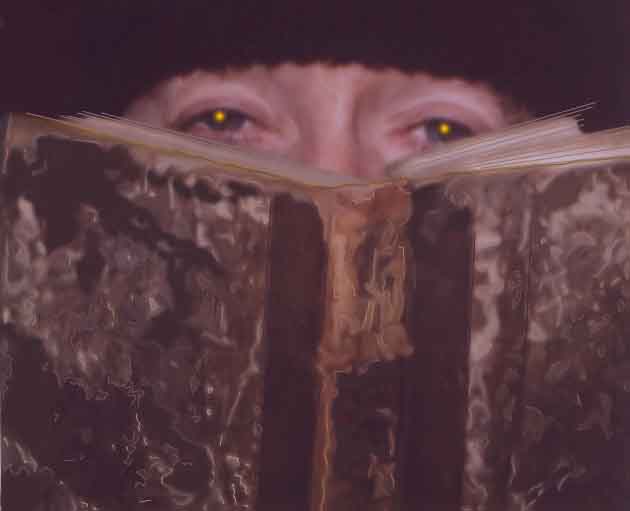









BLAINE ARNOT
[This review first appeared in Arts Atlantic 43, Spring/Summer, 1992, p. 5]
Arnot is just out of art school, but he has already made an impressive number of good paintings. He has also made sculpture: most recently he installed a large cartoonish sculpture of a dog in a cemetery guard house in Halifax.
His latest work is a birdhouse which he put outdoors on Hollis Street in Halifax. It is a large, electrically-lit bird-feeder with little wooden houses on the structure modeled after the pitched roof turn-of-the-century house so common in the Maritimes. It was stuck in the ground like a big rotating clothesline. The little houses perch on a steel structure above a gold-coloured birdbath. At night, light comes out the little windows and bounces off the gilt-edged pool.
I like the connection this work makes with architectural history. One theory holds that humans learned to build houses by imitating animals like the Bower bird, an African species which makes a very large nest. Maybe the typical backyard birdhouse, or Arnot's more elaborate work, is an unconscious homage to the species from which which people may have learned architecture. There is birdhouse "genre," if it can be called that, which includes store-bought versions, homemade jobs, folk art variations, and even architecturally designed birdhouses.
Every few years there is a competition somewhere in which professional architects are asked to design bird houses. These model-size houses are created in the usual architectural way, that is, firstly as a design on paper. Only after many drawings is an actual bird house constructed. Throughout the architect's process of making a bird house, proportional niceties are worked out and only new materials are used. The working process of a visual artist like Blaine Arnot, or most amateur or folk birdhouse makers for that matter, is usually much different from that of an architect or industrial designer. Arnot did not make drawings or models for his birdhouse sculpture as an architect would have done, and so the proportions in his work are cruder than those of a work by an architect or an industrial designer. Architects often secretly long for the satisfactions and discoveries that are made possible if a thing is designed as it is being built. Artists usually do their thinking directly as they manipulate materials. But for many architects and for some artists, the general notion of how artists and architects work does not hold. For example, an architect like Philip Johnson, or any other architect with wealth, is able to build and alter a work during construction just like the artist who builds as s/he goes. Alternately, there are many artists who completely conceive a piece on paper in exactly the way an architect designs a building.
The methodological question is important to Arnot's birdhouse, which seems to want more "pre-conception" than he was willing to bring to it. The argument isn't new: when applicable, and according to the needs of a project, visual artists make better work with standard materials and applications, some of which can be worked out even before pen is set to paper, not to mention nail to wood. Looking at the work made me think that the additive forms of some sculpture and painting might have suited Arnot better. For example, none of his paintings would cause anyone to think of them as being "primitive", and yet his birdhouse encourages that kind of speculation. Arnot's other work involves painting and sculpture made mostly of aggregates of one material, and as one contemplates the complexities of joinery in his birdhouse piece the question arises why it shouldn't have been made in a more precise way.
Arnot is slumming a little, but the birdhouse is nevertheless a delightful work.

|
|